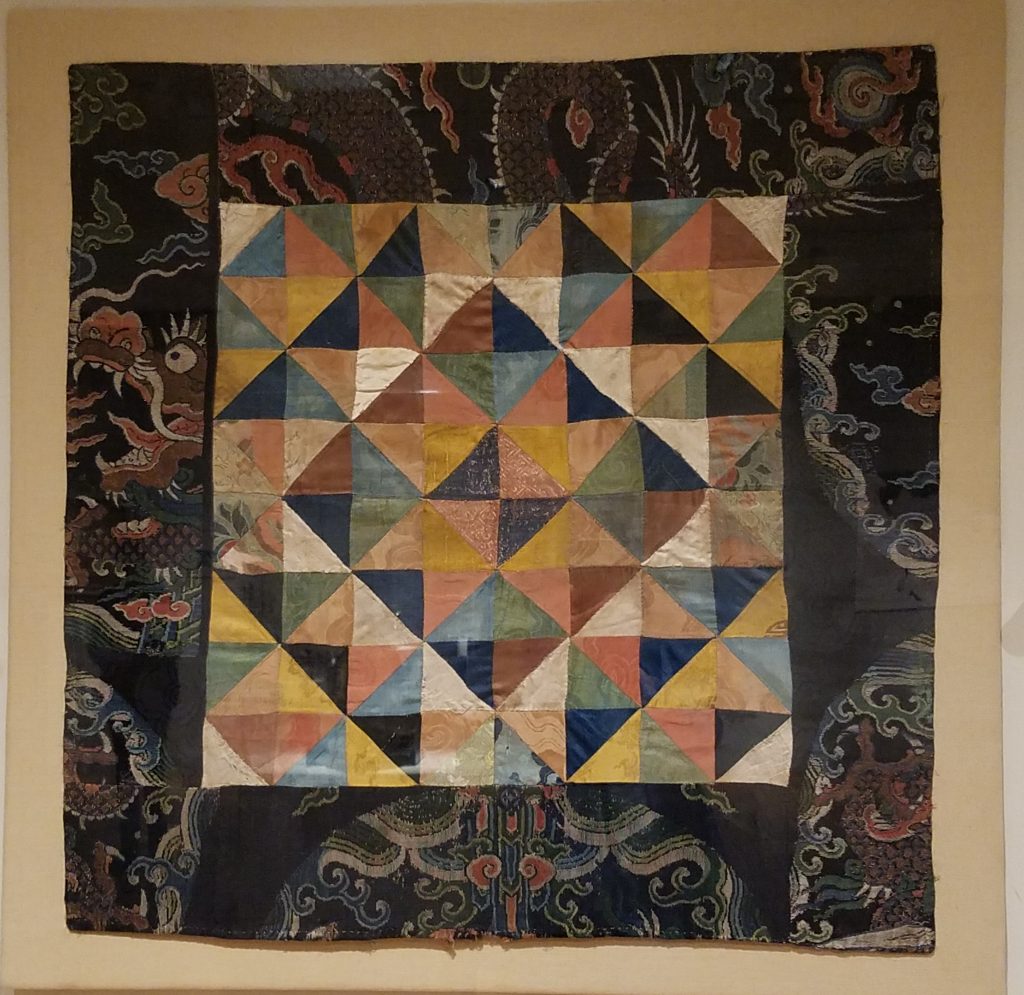Last month, I taught in the Fort Worth area of TX and was fortunately to be able to visit the Kimbell Art Museum where there was a special exhibit, Lands of Asia, featuring items from the Sam and Myrna Myers Collection. This silk Mandala from Tibet, Qing Dynasty (1644-1912), made from Chinese silk, caught my attention. The simple geometric pattern of triangles made from silk scraps glows and looks luminous. The large scale dragon print in the border is an added bonus.

In Tibet, where imported silks were always in short supply, the practice of making patchwork from silk scraps and recycled donations of clothing became a pious act born of necessity. These Mandalas made from half-square triangles, may have served as sacred diagrams to focus meditation. The number of pieces and their colors and arrangements were linked to numerology and divination. Mandalas were used by Tibetans in daily and religious life for altar coverings and table covers. In the context of Tantric Buddhism, geometric patchworks evoked the matrix of time and space in which the soul was caught in the web of existence.